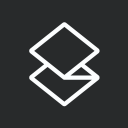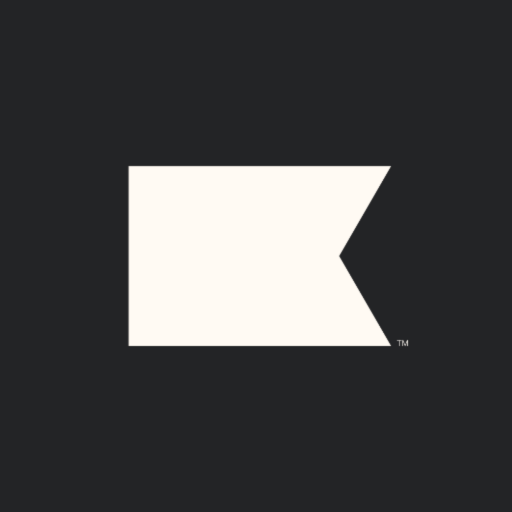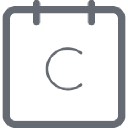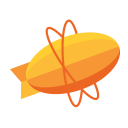
How We Designed A $230K/Month Wearable For Musicians
Hello! Who are you and what business did you start?
Hey! My name is Florian Simmendinger and I started Soundbrenner in 2014. We are a music technology company to make music practice addictive for all musicians.
Our first product is called Pulse, a smart wearable device. It allows musicians to replace the annoying sound of a metronome with a vibration, so they can literally feel the beat they want to play. Later on, we released the Core, which is a full-on smartwatch for musicians, that also includes a contact tuner, dB meter, and more. We raised $1.6M on Indiegogo and to date sold close to 100,000 of our wearables.
Aside from the hardware, we also develop our own mobile apps for iOS and Android. They are the world's most popular metronome with over 6 million downloads and over 600,000 musicians that use it every month.

What's your backstory and how did you come up with the idea?
In 2014 I just graduated from university in a rural area in South Germany. I decided to move to Berlin to get a job in consulting. However, my real dream was to start my own business one day, but it seemed wrong to do so right out of university. It felt like this sort of stuff only happens in movies. However, once I was in Berlin, I met hundreds of entrepreneurs and realized there is no reason to wait. Once I met my co-founder Julian Vogels, I canceled my job search and we decided to start Soundbrenner!
One important thing to understand about marketing is that it is extremely specific to your product category and audience - so there are no silver bullets that work for everyone.
We got the idea for our first product, the vibrating metronome, from a classical violinist called Vinh-Nghi Tiet. We were all three musicians and passionate about great design. We felt there is a lot of potential in music equipment for instrument players because the existing big companies in the space still release products that look like they are from the 90s.
Our first question was whether "feeling the beat" would actually work. So Julian quickly soldered together with a prototype and programmed it in about 24 hours. We took an old Nokia cell phone apart to get a vibration motor and handled the rest with Arduino and a 3D printer. Our first feedback was horrible because we used the wrong components. However, between the lines, we could see people were excited and there is potential if executed correctly.

We entered several pitching competitions and an investor out of Hong Kong called Brinc offered us funding as well as support in product development. The only caveat: back then they required that we would have to move to Hong Kong and Shenzhen. So Julian and I packed our bags, we moved around the world, and went straight to work in the heart of China's consumer electronics industry.
From there we made rapid progress and eventually launched on crowdfunding. We were able to raise a seed round from investors with this success under our belt, successfully shipped all our pre-orders, and launched in global retail. But this was only just the start…

Take us through the process of designing, prototyping, and manufacturing your first product.
Designing a connected hardware product is very difficult, especially for first-time founders. You need to bring together so many different disciplines: industrial design, mechanical design, electrical engineering, firmware development, iOS & Android apps, and much more. All this while being severely constrained for funding.
Coming to Hong Kong & Shenzhen was a blessing. There is so much expertise here on how to design products for mass manufacturing. We hired several experts that had already shipped many products before. We used the funding from our investor Brinc to pay them - it was definitely a huge challenge to make it work because developing hardware is expensive.
In the development process, our main contribution was to talk to musicians, test prototypes, get feedback, and define all the requirements. Product development also involves a lot of tradeoffs, for example, do you want a bulky device with great battery life or a sleek device with poor battery life? Another important area is usability. How many buttons should it have, how to navigate it, what are the gestures? All those decisions had to be made by us.
Once we accurately defined the product requirements, our experts were able to help us bring our vision to life. However, it still required a lot of hands-on time from my technical co-founder Julian, without whom I would have been completely lost in discussions with the technology vendors.


Describe the process of launching the business.
We decided to launch on Indiegogo. This seemed like a great choice because we definitely did not have enough funding to buy the tooling for manufacturing and the inventory of a first batch.
You will likely spend more time with your co-founder than your spouse, and go through equally challenging ups and downs. Choose wisely!
Our investor Brinc helped a lot during this time. How to shoot a marketing video? How to do PR and connect with journalists? How to run a crowdfunding campaign? We've never done any of these things before so having someone with experience by our side was invaluable.
However, not everything went smoothly! For example, for a crowdfunding campaign, you must acquire an audience before your launch, so you can go off like a rocket on the first day. This will snowball into getting exposure on Indiegogo/Kickstarter, get journalists to write about you, and more.
So how to get an audience? Our strategy was to create a landing page to collect email addresses. Now our "genius idea" was to not tell people what exactly our product would do to create more mystery around it. We called it "World's first wearable for musicians - sign up to learn more". It worked. People were extremely curious and we got over 20,000 signups. People in music forums started discussing what it could be. We were over the moon happy. We felt like we had this in the bag.
However, our launch went horrible. It was one of the worst days in our company's history. Our mistake was that people actually didn't know what they signed up for and many were not interested in a metronome. Also, we didn't do a very good job to explain what the advantages of a vibrating metronome are compared to the traditional solution. Since we had a mystery marketing campaign before, we never had the chance to test our real marketing. We made a giant mistake!
Luckily there was a happy ending, we hustled for the remainder of the campaign, revamped the positioning of our page, and in the end managed to narrowly reach our goal! Phew.

Since launch, what has worked to attract and retain customers?
When starting Soundbrenner, I thought I would spend most of my time developing products. However, it turns out for any consumer company marketing is as or even more important than the product. No matter how good, no product sells itself.
One important thing to understand about marketing is that it is extremely specific to your product category and audience - so there are no silver bullets that work for everyone. We found for us when it comes to driving sales, the most effective by far was performance marketing, especially with Facebook & Instagram. Our products are very innovative and there is nothing like them. So no one goes to Google or in a music store to search for a vibrating metronome or a smartwatch for musicians. They don't even know it exists! Facebook & Instagram are an amazing way for us to help people discover our products.
To properly succeed on those platforms, we needed to become a small media company. We constantly need new assets to update our community and musicians about what's new and what you can do with our products. We now produce new videos and photos weekly and have an in-house content team for that purpose. We also built an amazing team with lots of experience in how to run ads efficiently. Integrated with those efforts is optimizing our website & running email campaigns.
How are you doing today and what does the future look like?
Today we have 17 employees of which about half work in marketing. All three channels (soundbrenner.com & Amazon & brick & mortar retail) are important and significant revenue drivers for us. Our products are now available in over 1,000 music stores in over 40 countries.
However, we feel like we are just 1% of our ultimate potential. The number of projects on our to-do lists for the future is longer than ever and seems to be growing every year. There is so much potential - it is very exciting. However, this is the key to being a successful entrepreneur. 1,000 things sound promising, but you only have time & money to do 1-2 of them. So choose wisely.
For us, this means that in the coming months we will focus on our mobile app, which has been neglected for the past years. There are a lot of features we want to build and add, but it is not feasible as long as our app is completely free. So our main priority right now is to find a way to generate revenue with our app, so we can increase the size of our development team and make that product even better. It's already used by over 600,000 musicians today after all.
What platform/tools do you use for your business?
Website: WordPress frontend, Shopify checkout
Collaboration: Slack, Zoom, Jira/Confluence
Email: Superhuman & Klaviyo
Favorite Mac apps I use daily: Divvy (resizing windows), Imageoptim (compress images), Clocker (best tool to check multiple time zones at once).
Favorite online service: Calendly - saves me several hours in a meeting scheduled every month.
Presentation software: Pitch. It's a lot more fun & speedy than Google Slides and evolving very fast. Great team.
Other than that we are building a lot of essential tools for our company in Google Sheets (Marketing, operations, forecasting, manufacturing planning, etc.)
What have been the most influential books, podcasts, or other resources?
Some content I really loved:
- How to start a startup series from Y Combinator (check YouTube)
- Biographies in general, some good ones are Shoe Dog (Nike), Total Recall (Arnold Schwarzenegger), Idea Man (Paul Allen), Surely you’re joking, Mr. Feynman (Richard Feynman), Steve Jobs, Elon Musk and various others
- The Fountainhead
- Made to Stick (this is the best book you can read on how to communicate ideas so they are convincing & memorable, e.g. perfect for fundraising)
Advice for other entrepreneurs who want to get started or are just starting?
Most startups fail due to "co-founder breakup". You will likely spend more time with your co-founder than your spouse, and go through equally challenging ups and downs. Choose wisely!
Staying as lean as possible for as long as possible is a superpower. Don't get distracted by shiny funding rounds and large employee counts. Being a tiny team with a low burn allows you to experiment very quickly. The only scale once you're 100% sure you found product-market fit. A lot of companies fail because they scale too early.
Have a bias towards action in the beginning. I've seen new founders waste years on writing a business plan and doing non-essential things. In the first months, you should only focus on one thing and that is building a great product people want. Everything else should be ignored or is at least secondary (fancy business cards, a nice brand, etc.)
Are you looking to hire for certain positions right now?
Right now we primarily hire mobile app engineers but that is constantly changing. Check out our website for our current up to date openings.
Where can we go to learn more?
If you have any questions or comments, drop a comment below!

Download the report and join our email newsletter packed with business ideas and money-making opportunities, backed by real-life case studies.

Download the report and join our email newsletter packed with business ideas and money-making opportunities, backed by real-life case studies.

Download the report and join our email newsletter packed with business ideas and money-making opportunities, backed by real-life case studies.

Download the report and join our email newsletter packed with business ideas and money-making opportunities, backed by real-life case studies.

Download the report and join our email newsletter packed with business ideas and money-making opportunities, backed by real-life case studies.

Download the report and join our email newsletter packed with business ideas and money-making opportunities, backed by real-life case studies.

Download the report and join our email newsletter packed with business ideas and money-making opportunities, backed by real-life case studies.

Download the report and join our email newsletter packed with business ideas and money-making opportunities, backed by real-life case studies.





















